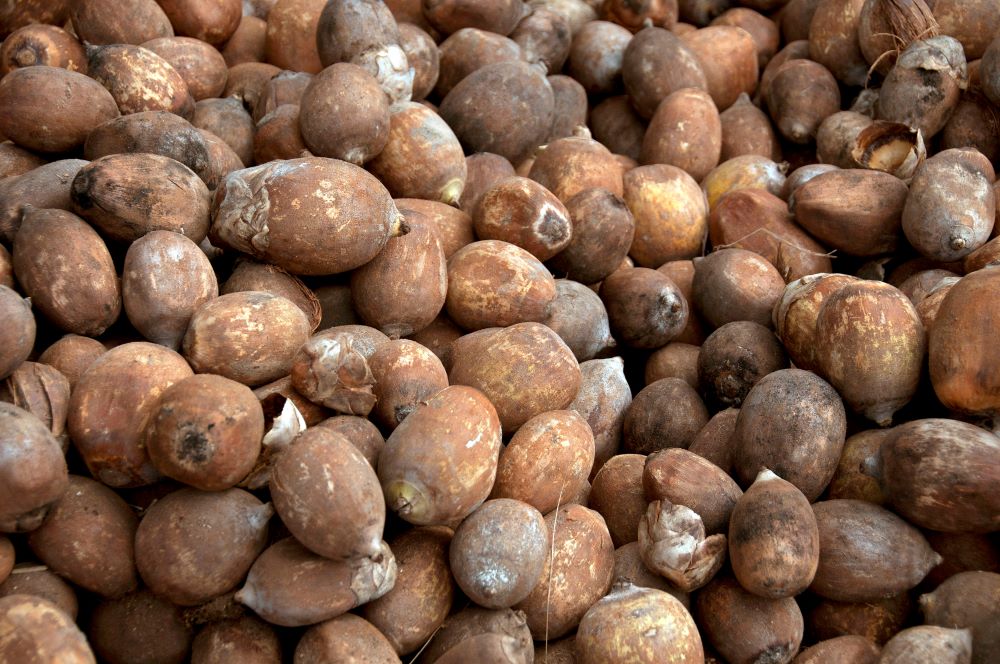Ob es sich um eine oberflächliche Wunde oder eine tiefere Entzündung handelt, eingerissene Mundwinkel sind schmerzhaft und irritierend. Ein Grund dafür ist, dass der Mund ständig in Bewegung ist, was es den Rissen erschwert, zu heilen. Aber es gibt Möglichkeiten, weitere Schäden zu verhindern.
Unbehagen beim Sprechen, Kauen und ein brennendes Gefühl an den Lippen - wir alle hatten schon einmal rissige und gerötete Mundwinkel. Auch wenn diese Hautverletzungen klein sind, können sie oft lange Zeit schmerzen, da der Mund ständig in Bewegung ist. Die Heilung braucht Zeit, aber zum Glück gibt es Behandlungen, die die Symptome lindern können.
Es gibt viele Gründe, warum Ihre Mundwinkel einreißen können. So kann zum Beispiel die trockene Winterluft, sowohl draußen als auch durch die Heizung, zu dieser Art von Hautproblemen beitragen. Außerdem haben die Lippen keine Talg- oder Schweißdrüsen wie andere Hautpartien, was sie empfindlicher macht. Wenn Sie Ihre Lippen nicht mit Feuchtigkeit versorgen, sind sie anfällig für Risse.
Was sind eingerissene Mundwinkel?
Eingerissene Mundwinkel sind ein häufiges, meist vorübergehendes Problem. Die Haut um die Lippen ist empfindlich und wird in diesem Bereich leicht rissig, was zu Entzündungen, Krusten und Rötungen führen kann. Das Symptom, das auch als orale Rhagaden, Perleche oder Cheilitis angularis bezeichnet wird, ist jedoch nicht immer nur ein kosmetisches Problem. Manchmal kann es ein Hinweis auf eine zugrunde liegende Erkrankung sein.
Der Kontakt mit sauren oder salzigen Lebensmitteln kann einen brennenden Schmerz auslösen, der das Essen schmerzhaft macht. Auch das Zähneputzen mit Zahnpasta oder der Kontakt mit Speichel kann unangenehm sein.
Außerdem heilen eingerissene Mundwinkel oft nur schwer. Das liegt daran, dass die Mundwinkel bei anspruchsvollen Mundbewegungen - wie Gähnen oder Lachen -, aber auch bei alltäglicheren Aufgaben wie Zähneputzen oder Sprechen, Belastungen ausgesetzt sind, die den Heilungsprozess behindern.
Bakterien, Viren und Pilze vermehren sich in den feuchten Bedingungen, die entstehen, wenn Ihre Mundwinkel trocken und rissig sind. Dies kann zu Entzündungen führen und - wenn es unbehandelt bleibt - zu einem langfristigen Problem werden.
Ursachen für eingerissene Mundwinkel
Im Winter können Ihre Mundwinkel leicht einreißen und empfindlich werden, weil das kalte Wetter Ihre Lippen belastet. Außerdem könnte ein Vitamin- oder Nährstoffmangel für Rhagaden verantwortlich sein. Ein Mangel an Eisen, Vitamin C, Zink und Vitamin B fördert bei vielen Betroffenen die Entstehung von schmerzhaften Rissen. In diesem Zusammenhang können sich auch Entzündungen in den Mundwinkeln entwickeln. Ein Besuch beim Zahnarzt kann jedoch ebenso notwendig sein. Denn in manchen Fällen deuten eingerissene Mundwinkel auf eine schlechte Zahnhygiene hin. Eine weitere häufige Ursache für diesen Zustand bei Erwachsenen sind Hefepilzinfektionen. Kinder bekommen in der Regel Mundwinkelrhagaden bei Streptokokken-Virusinfektionen. Aber auch andere Krankheiten können diese Rhagaden verursachen. Es ist immer ratsam, einen Arzt zu konsultieren, wenn Sie medizinische Bedenken haben, aber einige häufige Krankheiten, die die Ursache für Risse in den Mundwinkeln sein könnten, sind Neurodermitis, Leberzirrhose, Diabetes mellitus und Autoimmunerkrankungen.
Vitaminmangel als Ursache für eingerissene Mundwinkel
- Eisenmangel: Menschen mit Eisenmangelanämie haben oft geschwollene, schmerzhafte Risse in den Mundwinkeln (Rhagaden genannt) sowie brüchige Nägel und Haare. Ihre Zungen können auch rot und brennend erscheinen (ein Zustand, der als Lackzunge bezeichnet wird), und sie haben möglicherweise Schluckbeschwerden. Ärzte bezeichnen diese Kombination von Symptomen manchmal als Plummer-Vinson-Syndrom.
- Zinkmangel: Wenn Ihr Immunsystem anfällig ist, wird Zink noch wichtiger, und ein Mangel daran kann zu schmerzhaften Rissen im Mund führen.
- Vitamin B12-Mangel: Schwangere Frauen und Alkoholiker sind besonders anfällig für diesen Mangel. Zusätzlich zu den Rhagaden im Mund leiden die Betroffenen auch unter Hautausschlägen und Lichtempfindlichkeit.
- Vitamin C-Mangel: Wenn Sie über einen längeren Zeitraum nicht genügend Vitamin C zu sich nehmen, macht sich das in Form von Skorbut bemerkbar. Das ist der Fall, wenn Sie Dinge wie Zahnfleischbluten und eingerissene Mundwinkel sehen.
Erhöhter Speichelfluss als Ursache für eingerissene Mundwinkel
Unser Verdauungsprozess beginnt im Mund, wenn wir anfangen zu speicheln. Dieser Speichel enthält viele Enzyme und Fermente, die die Nahrung aufspalten können. Wenn dieser Speichel jedoch mit unseren Lippen in Berührung kommt, schädigt er den Säureschutzmantel und macht die Haut um unseren Mund herum viel empfindlicher. Der Bereich um die Mundwinkel ist aufgrund der Feuchtigkeit und Wärme eine Brutstätte für Keime, sagen Experten. Der erhöhte Speichelfluss in der Nacht ist die häufigste Ursache für eingerissene Mundwinkel. Wenn Sie mit offenem Mund schlafen, sammelt sich der Speichel oft in den Mundwinkeln. Aber auch, wenn Sie mit den Zähnen knirschen oder der Biss Ihrer Zähne nicht stimmt, kann dies einen erhöhten Speichelfluss anregen, der dann zur Zerstörung des Säureschutzmantels der Haut führt.
Krankheiten als Ursache für eingerissene Mundwinkel
- Hauterkrankungen: Neurodermitis-Patienten leiden unter entzündeter und juckender Haut. Dies kann sich auch auf die Mundwinkel ausbreiten, denn die gereizte Haut macht anfällig für bakterielle und Pilzinfektionen.
- Diabetes mellitus: Wenn ein Mensch an Diabetes leidet, verliert sein Körper schnell Wasser. Nicht nur das, auch die Speichel- und Talgdrüsen sind häufig geschädigt. So trocknet die Haut von Diabetikern nicht nur leichter aus, sondern wird auch viel leichter gereizt und rissig. Krankheitserreger können diese kleinen Risse in der Haut ausnutzen, um in den Körper einzudringen und eine Infektion zu verursachen, da Diabetiker ein geschwächtes Immunsystem haben.
- Herpes-Virus: Wenn Ihr Immunsystem nicht richtig funktioniert, zum Beispiel aufgrund einer schlechten Ernährung, haben Sie möglicherweise einen Zinkmangel. Dies kann sich durch schmerzhafte Wunden im Mund bemerkbar machen. Wenn Sie einen Mangel an Vitamin C haben, können Sie irgendwann Risse in den Mundwinkeln bekommen. Das Herpesvirus gedeiht gut, wenn Ihr Immunsystem geschwächt ist. Wenn es also in Ihrem Körper vorhanden ist, kann es wieder erweckt werden und befällt dann oft die Lippen oder den Mundbereich.
- Leberzirrhose: Das Endstadium einer chronischen Lebererkrankung ist durch die folgenden Symptome gekennzeichnet: Gelbsucht, Aszites, eine lackierte Zunge (rötlich brennende Zunge) und eingerissene Mundwinkel.
- Autoimmunerkrankung: Die Autoimmunerkrankung Sjögren-Syndrom betrifft vor allem Frauen und richtet sich speziell gegen die Speicheldrüsen. Nach der Menopause haben viele Betroffene mit einem chronisch trockenen Mund und trockenen Augen zu kämpfen, was den Alltag erschwert. Weitere mögliche Symptome sind: Sprach- und Schluckstörungen, Geschmacksveränderungen, trockene Lippen und sogar wunde Stellen in den Mundwinkeln.
Eingerissene Mundwinkel nach Zahnarzt
Haben Sie nach einem Zahnarztbesuch häufig eingerissene Mundwinkel? Wenn ja, könnte das einen einfachen mechanischen Grund haben: Wenn der Zahnarzt Ihren Mund unsensibel öffnet, können kleine Hautrisse entstehen und Keime die Haut besiedeln.
Wann zum Arzt wegen eingerissener Mundwinkel?
Das Einreißen der Mundwinkel wird oft durch eine Kombination aus trockener Heizungsluft und Kälte im Winter verursacht. Dieses Problem kann jedoch mit pflegenden Lippencremes und -salben behoben werden. In nur wenigen Tagen werden Sie sehen, dass Ihre rissigen Lippen verschwunden sind!
Wenn Ihre Pflegeroutine nicht hilft und die Risse immer wiederkehren, sollten Sie einen Arzt aufsuchen. Ein Eisenmangel ist häufig der Grund dafür, insbesondere bei Frauen. Dieser kann in der Regel durch eine Umstellung der Ernährung oder die Einnahme eines Eisenpräparats (unter ärztlicher Aufsicht!) behoben werden.
Die Mundwinkel brauchen im Winter länger, um zu heilen, weil das Immunsystem bereits geschwächt ist. Wenn sich zusätzliche Entzündungen, Krusten oder Beläge bilden, kann es sich um bakterielle oder virale Infektionen handeln. Ein Arzt kann sie jedoch gut behandeln.
Hausmittel bei eingerissenen Mundwinkeln?
Es gibt viele kurz- und langfristige Lösungen, sobald die Ursache festgestellt wurde. Einige davon sind: Stärkung der Immunität, Ernährungsumstellung, um den Eisenmangel auszugleichen, oder die Anwendung einer der folgenden Methoden:
- Zinkhaltige Salbe gegen Lippenherpes ist ein Auslöser für eingerissene Mundwinkel.
- Wenn Sie eine Linderung von Entzündungen und Bakterien suchen, mischen Sie Honig und Olivenöl. Tragen Sie die Paste morgens und abends auf Ihre Mundwinkel auf.
- Salbeitee - Um Salbeitee zuzubereiten, geben Sie zwei Teelöffel Salbeiblätter in eine Tasse mit kochendem Wasser. Lassen Sie die Mischung zehn Minuten lang ziehen, bevor Sie sie mehrmals am Tag mit einem Wattebausch auf die rissigen Stellen tupfen.
- Schneiden Sie eine Knoblauchzehe ab und tragen Sie sie direkt auf den Riss auf. Das Allicin im Knoblauch hilft, die Entzündung zu reduzieren und die Heilung zu fördern.
- Aloe-Vera-Gel ist nicht nur gut für Ihre Haut, sondern hat auch eine lange Liste von Vorteilen. Diese Inhaltsstoffe wirken entzündungshemmend, antibakteriell und spenden Ihrer Haut Feuchtigkeit - und das alles auf einmal!
- Obwohl es sehr wirkungsvoll ist, sollte Teebaumöl aufgrund seiner intensiven Pflanzenöle und ätherischen Öle mit Vorsicht verwendet werden. Diese Bestandteile können bei manchen Menschen Hautreizungen hervorrufen.
Wie kann man eingerissene Mundwinkel vorbeugen?
Wenn Sie ständig mit der Zunge über trockene Lippen fahren, riskieren Sie die Entstehung von Mundwinkelrhagaden. Selbst wenn Ihre Mundwinkel nur leicht rissig sind, bietet dies eine Gelegenheit für Bakterien, zu wachsen und zu gedeihen und Entzündungen zu verursachen. Verwenden Sie stattdessen einen Lippenbalsam oder ein ähnliches Produkt, um Ihre Lippen mit Feuchtigkeit zu versorgen und zu pflegen. Eine schlechte Ernährung verschlimmert die Symptome ebenfalls. In diesem Fall sollte die Verletzung nicht durch scharfe Lebensmittel verschlimmert werden, da dies die Heilung nur verzögert. Vermeiden Sie insbesondere scharfe und saure Speisen. Beim Zähneputzen vermeiden Sie am besten breite Bürstenstriche, damit die Zahnbürste nicht schmerzhaft in die Mundwinkel stößt. Achten Sie generell sorgfältig darauf, mögliche Auslöser zu vermeiden. Darüber hinaus ist es - vor allem in den Wintermonaten - wichtig, die Lippen mit fetthaltigen Salben oder Lippenpflegestiften zu befeuchten, um sie vor dem Austrocknen zu bewahren.



